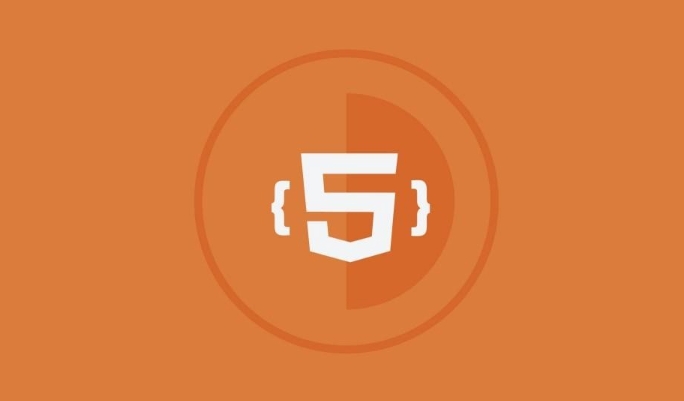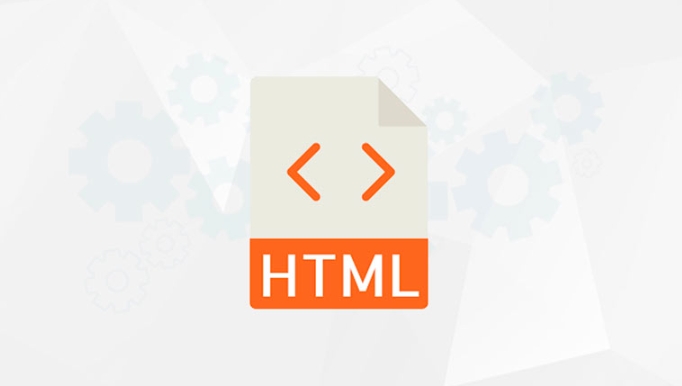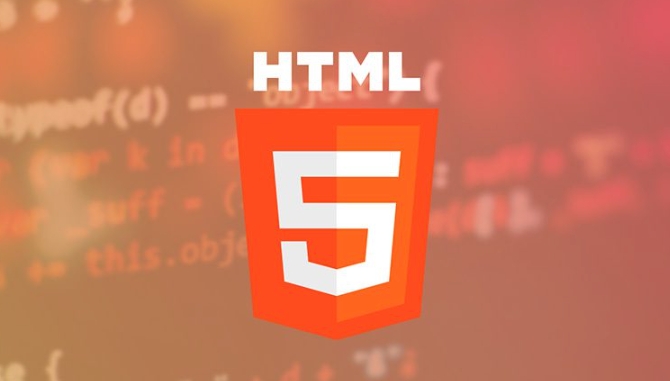Recommended interactive HTML tutorial platforms include freeCodeCamp, W3Schools Tryit Editor, CodePen and SoloLearn. The selection criteria are: support for editing and running within the browser, provide instant feedback, include exercises, and have reasonable structure. When learning, you should manually enter the code, try to modify, build small projects, use DevTools, and accept errors. After advancement, you can set up a local environment and use VS Code and other tools to develop offline. Maintaining practice is the key to mastering HTML.

If you're looking for an interactive HTML tutorial to practice, you're probably trying to learn by doing — and that's a great approach. HTML is best learned when you can write code, see results instantly, and experiment with different elements. Here are some solid options and tips on how to make the most of them.

What Makes a Good Interactive HTML Tutorial?
Not all tutorials are created equal. A good interactive HTML tutorial should:

- Let you edit and run code directly in the browser.
- Provide instant feedback or visual results.
- Include exercises or challenges after each concept.
- Be structured logically from basic to more advanced topics.
You don't need fancy tools — just something simple and effective that lets you try things out without getting stuck in setup.
Free Platforms with Hands-On HTML Practice
Here are a few beginner-friendly platforms that offer interactive HTML learning:

- freeCodeCamp – Offers a full HTML course where you type code and see it rendered immediately. Great for building real-world projects like a taxe page or survey form.
- W3Schools Tryit Editor – One of the simplest ways to test HTML snippets. Left side is your code, right side shows the result.
- CodePen – Not a tutorial per se, but perfect for experiencing once you've learned a bit. You can also look at other people's pens to see how they structure HTML.
- SoloLearn – Has a mobile-friendly HTML course with short lessons followed by coding quizzes.
These platforms vary slightly in style, but all allow hands-on practice without needing to install anything.
How to Get the Most Out of HTML Practice
Just clicking through won't stick unless you actually write the code yourself. Here's how to make it count:
- Don't skip typing out the examples — even if it looks easy. Muscle memory helps.
- Try changing small parts of the code to see what happens. For example, switch
<h1></h1>to<h6></h6>and see how it affects the size. - Build mini-projects as you go — like a personal profile or a simple menu — to apply what you've learned.
- Use browser DevTools to inspect your own pages and understand how HTML works behind the scenes.
Also, don't worry if things break — that's part of learning. Just refresh and try again.
Bonus: Setting Up Your Own Practice Environment
Once you get past the basics, it's worth setting up a local environment so you can work offline and build bigger things.
- Use a text editor like VS Code .
- Save files with a
.htmlextension. - Open them in your browser to see how they render.
This gives you more control and prepares you for real web development workflows.
All in all, finding an interactive HTML tutorial isn't hard — the key is to stay consistent and keep building. Pick one platform, start small, and don't be afraid to mess around with the code.
The above is the detailed content of Interactive HTML tutorial for practice. For more information, please follow other related articles on the PHP Chinese website!

Hot AI Tools

Undress AI Tool
Undress images for free

Undresser.AI Undress
AI-powered app for creating realistic nude photos

AI Clothes Remover
Online AI tool for removing clothes from photos.

Clothoff.io
AI clothes remover

Video Face Swap
Swap faces in any video effortlessly with our completely free AI face swap tool!

Hot Article

Hot Tools

Notepad++7.3.1
Easy-to-use and free code editor

SublimeText3 Chinese version
Chinese version, very easy to use

Zend Studio 13.0.1
Powerful PHP integrated development environment

Dreamweaver CS6
Visual web development tools

SublimeText3 Mac version
God-level code editing software (SublimeText3)

Hot Topics
 Explain the purpose of the role attribute in ARIA.
Jun 14, 2025 am 12:35 AM
Explain the purpose of the role attribute in ARIA.
Jun 14, 2025 am 12:35 AM
ARIA's role attribute is used to define the role of web elements and improve accessibility. 1. Role attribute helps assistive technology to understand the functions of elements, such as buttons, navigation, etc. 2. Use role attributes to assign specific roles to non-semantic HTML elements. 3. The role attribute should be consistent with the element behavior and be verified by the accessibility tool test.
 HTML and Design: Creating the Visual Layout of Websites
Jun 14, 2025 am 12:39 AM
HTML and Design: Creating the Visual Layout of Websites
Jun 14, 2025 am 12:39 AM
How to create a website layout? 1. Use HTML tags to define the content structure, such as, ,. 2. Control styles and positions through CSS, using box model, float or Flexbox layout. 3. Optimize performance, reduce HTTP requests, use cache and optimize images, and ensure responsive design.
 How can you ensure your HTML code is readable and maintainable?
Jun 10, 2025 am 12:06 AM
How can you ensure your HTML code is readable and maintainable?
Jun 10, 2025 am 12:06 AM
Improve the readability and maintainability of HTML code can be achieved through the following steps: 1. Use semantic tags, such as, etc. to make the code structure clear and improve SEO effect; 2. Keep the code formatted and use consistent indentation and spaces; 3. Add appropriate comments to explain the code intention; 4. Avoid excessive nesting and simplify the structure; 5. Use external style sheets and scripts to keep the HTML concise.
 How do I stay up-to-date with the latest HTML standards and best practices?
Jun 20, 2025 am 08:33 AM
How do I stay up-to-date with the latest HTML standards and best practices?
Jun 20, 2025 am 08:33 AM
The key to keep up with HTML standards and best practices is to do it intentionally rather than follow it blindly. First, follow the summary or update logs of official sources such as WHATWG and W3C, understand new tags (such as) and attributes, and use them as references to solve difficult problems; second, subscribe to trusted web development newsletters and blogs, spend 10-15 minutes a week to browse updates, focus on actual use cases rather than just collecting articles; second, use developer tools and linters such as HTMLHint to optimize the code structure through instant feedback; finally, interact with the developer community, share experiences and learn other people's practical skills, so as to continuously improve HTML skills.
 How do I use the element to represent the main content of a document?
Jun 19, 2025 pm 11:09 PM
How do I use the element to represent the main content of a document?
Jun 19, 2025 pm 11:09 PM
The reason for using tags is to improve the semantic structure and accessibility of web pages, make it easier for screen readers and search engines to understand page content, and allow users to quickly jump to core content. Here are the key points: 1. Each page should contain only one element; 2. It should not include content that is repeated across pages (such as sidebars or footers); 3. It can be used in conjunction with ARIA properties to enhance accessibility. Usually located after and before, it is used to wrap unique page content, such as articles, forms or product details, and should be avoided in, or in; to improve accessibility, aria-labeledby or aria-label can be used to clearly identify parts.
 How do I create a basic HTML document?
Jun 19, 2025 pm 11:01 PM
How do I create a basic HTML document?
Jun 19, 2025 pm 11:01 PM
To create a basic HTML document, you first need to understand its basic structure and write code in a standard format. 1. Use the declaration document type at the beginning; 2. Use the tag to wrap the entire content; 3. Include and two main parts in it, which are used to store metadata such as titles, style sheet links, etc., and include user-visible content such as titles, paragraphs, pictures and links; 4. Save the file in .html format and open the viewing effect in the browser; 5. Then you can gradually add more elements to enrich the page content. Follow these steps to quickly build a basic web page.
 How do I create checkboxes in HTML using the element?
Jun 19, 2025 pm 11:41 PM
How do I create checkboxes in HTML using the element?
Jun 19, 2025 pm 11:41 PM
To create an HTML checkbox, use the type attribute to set the element of the checkbox. 1. The basic structure includes id, name and label tags to ensure that clicking text can switch options; 2. Multiple related check boxes should use the same name but different values, and wrap them with fieldset to improve accessibility; 3. Hide native controls when customizing styles and use CSS to design alternative elements while maintaining the complete functions; 4. Ensure availability, pair labels, support keyboard navigation, and avoid relying on only visual prompts. The above steps can help developers correctly implement checkbox components that have both functional and aesthetics.
 What is an HTML tag?
Jun 13, 2025 am 12:36 AM
What is an HTML tag?
Jun 13, 2025 am 12:36 AM
HTMLtagsareessentialforstructuringwebpages.Theydefinecontentandlayoutusinganglebrackets,ofteninpairslikeand,withsomebeingself-closinglike.HTMLtagsarecrucialforcreatingstructured,accessible,andSEO-friendlywebpages.






